








Midweek Update 27 July 2023Google Banner Ad THIS WEEK IN MIDWEEK UPDATE FAA proposes rule to enhance safety and performance of light sport aircraft. Ammunition and electronic systems dominate SA's 2022 defence exports. Cicaré announces certification of its Cicaré 8 ultralight helicopter. Chad Air Force reveals Hurkus, Anka aircraft. Boeing announces second-quarter deliveries. Wisk to make EAA AirVenture Oshkosh debut with autonomous air taxi. Cirrus Aircraft adds auto radar by Garmin® and Cirrus IQ™ Connectivity to the best-selling Vision. Worldwide incidents and accidents This week in History - Maj Edward Mannock, Britain's highest scoring ace of WWI, is shot down by German ground fire. Bonus Video - Heinie's RC Warbirds at Barnstormers 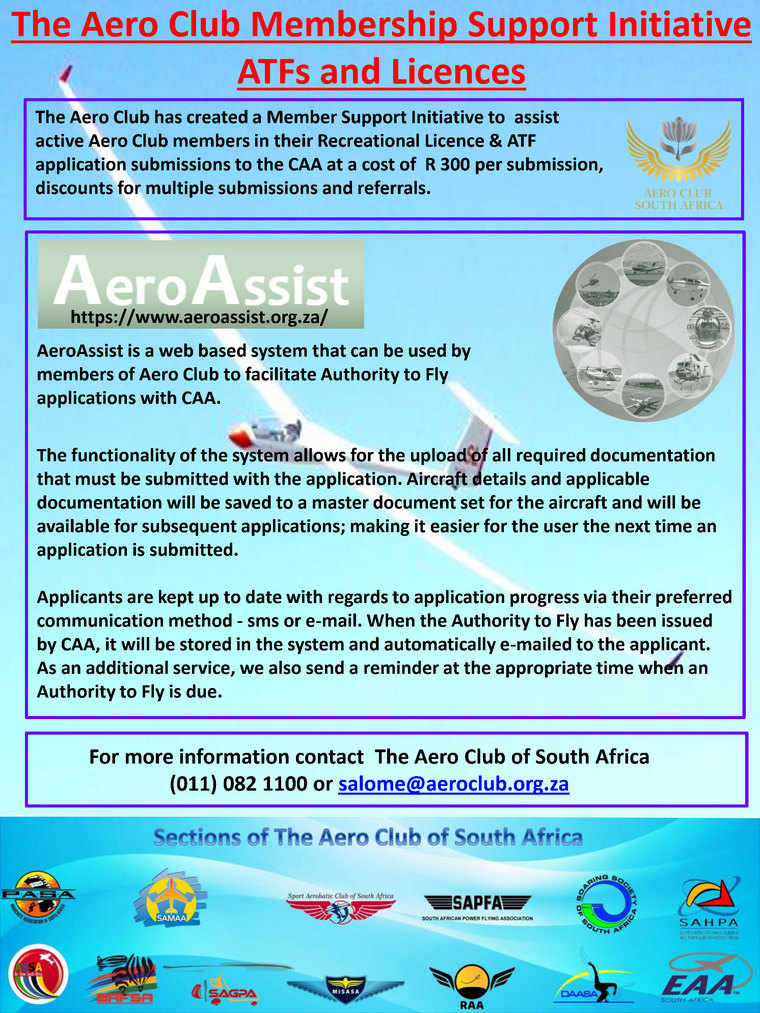   29 & 30 Soutpansberg Airshow & SAPFA Speed Rally Louis Trichardt FALO For Airshow Contact Jaco 082 353 6002 or Bianca 084 297 7274 E-mail: spbvliegklub@gmail.com SAPFA Speed Rally No.3 - Louis Trichardt Contact David le Roux E-mail: david@pilotinsure.co.za Cell: 073 338 5200 29 Jul to 5 Aug FAI Rally Flying World Championships - Mâcon, France. Contact Leon Bouttell E-mail: Leon@lbaa.co.za Cell: 076 294 1363  5 EAA Chapter 322 Saturday breakfast fly-in/ gathering EAA Auditorium 07.30 for more information contact Neil Bowden at E-mail: airadventuresa@gmail.com 5 Thabazimbi Apiesdoring Carnival and Fly in. Chris Ehlers 082 371 4492 or Gert Ehlers 083 652 6208 5 South African Airways Museum Society AGM, Boeing 747SP. RSVP E-mail: secretary@saamuseum.co.za 19 EAA Chapter 322 breakfast fly-in venue TBA. Contact Neil Bowden at E-mail: airadventuresa@gmail.com 19 & 20 SAC North-West Regionals Klerksdorp airfield. Contact Annie Boon at E-mail: info@anniesaviationcorner.com 19 & 20 August SAPFA Speed Rally Groblersdal airfield. For more information contact David le Roux at E-mail: david@pilotinsure.co.za Cell: 073 338 5200  1 Children's Flight at Orient airfield, Magaliesberg. Contact Felix Gosher E-mail: felixgosher@gnmail.com Cell: 086 191 4603 2 EAA Chapter 322 monthly gathering Auditorium Rand Airport at 07.30 Contact Neil Bowden E-mail: airadventuresa@gmail.com for more information 2 & 3 Rand Airshow Contact Kevin van Zyl Tel: 011 827 8884 for more information 9 Virginia Durban airshow. Contact Brendan Horan E-mail: airshow@creativespacemedia.com Cell: 078 486 6888 9 Helicopter fly-in to Krugersdorp airfield. Contact David le Roux E-mail: David@pilotinsure.co.za 9 & 10 SAC World Advanced Aerobatic Championships training camp venue TBA Contact Annie Boon E-mail: info@anniesaviationcorner.com 16 Vans RV fly-in at Kitty Hawk. Contact Frank van Heerden E-mail: frankvh@mweb.co.za for more information 16 & 17 SAC Limpopo Regionals Phalaborwa airfield. Contact Annie Boon E-mail: info@anniesaviationcorner.com 30 Saldanha West Coast airshow. Contact Clive Coetzee E-mail: clivecoetzee@sun.ac.za Cell: 084 614 1675  FAA PROPOSES RULE TO ENHANCE SAFETY AND PERFORMANCE OF LIGHT SPORT AIRCRAFT The Federal Aviation Administration (FAA) is planning to enhance the safety and performance of Light Sport Aircraft operations. The proposed Modernization of Special Airworthiness Certification (MOSAIC) rule would put performance safety standards around larger aircraft that innovators are building by expanding the definition of Light Sport Aircraft. "This rule will encourage manufactures to make Light Sport Aircraft operations safer, more versatile and accessible while maintaining rigorous safety standards," said Acting FAA Associate Administrator for Safety David Boulter.  The proposal would also expand the type of aircraft sport pilots can operate and allows them to use their aircraft for a wider range of operations such as some aerial work. Although sport pilots could operate aircraft designed with up to four seats, they would remain limited to operating with only one passenger. The public has 90 days to comment on the proposed rule once it is published in the Federal Register. The FAA will publish a final rule and respond to comments after the comment period closes. AMMUNITION AND ELECTRONIC SYSTEMS DOMINATE SA'S 2022 DEFENCE EXPORTS www.defenceweb.co.za  Ammunition and electronic systems accounted for the majority of South African defence exports last year, according to the latest National Conventional Arms Control Committee (NCACC) annual report, with big items like armoured vehicles making up a relatively small percentage. 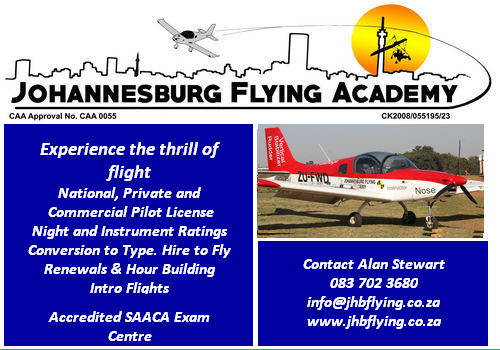 Ammunition accounted for the largest single component of South Africa's 2022 arms exports, amounting to R1.628 billion. Some of the larger customers for "round/shell" items included Australia (R382 million for 8 203 items); Germany (R119 million for 9 816 items); India (R315 million for 316 135 items); Qatar (R181 million for 49 201 items); and the UAE (R420 million for 42 800 items). Other ammunition customers included Bangladesh, the Philippines, Rwanda, Spain, and Turkey. Similarly, bombs and rockets made up R946 million worth of arms exports in 2022, with Germany, for example, acquiring 18 420 bombs (most likely mortar bombs) worth R575 million, and the Philippines acquiring 189 921 bombs for R204 million. Qatar bought over 2 000 rockets for R1.7 million and the UAE bought 399 907 bombs for R126 million. Other customers included Saudi Arabia and Zambia, buying 8 961 and 380 bombs respectively. After bombs, rockets and artillery rounds, electronic equipment accounted for the second largest portion of defence exports, amounting to R1.3 billion in 2022. Some of the larger exports included communications equipment to India (R55 million) and Mali (R39 million); measuring equipment to the United Kingdom (R32 million); countermeasures equipment to Germany (R79 million); and observation equipment to Turkey (76 items for R1.047 billion) and the UAE (32 million). 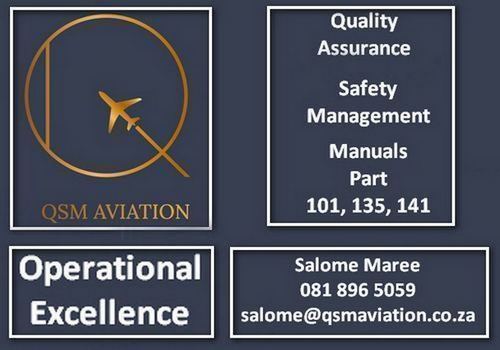 Other notable sales in 2022 included R210 million worth of light weapons. Bangladesh was the biggest recipient of light weapons, receiving 1 000 worth R79 million. Other customers included Brazil, Denmark, France, Malaysia, Korea, Peru, Singapore, the UAE and United States, but these were for between 1 and 72 items. The only aircraft being listed as exported last year was a single helicopter worth R12 million to Ghana, while Malaysia received 66 missiles (possible Ingwes for its armoured vehicle turrets supplied by Denel) worth R79 million. The NCACC report also lists R599 million worth of dual use exports in 2022. However, when all dual use exports are tallied up, they only come to R386 million, not R599 million as stated in the report.  Unmanned aerial vehicles (UAVs) worth R299 million were sold ten nations, including 36 to Benin (for R29 million); nine to Brazil (R11 million); seven to the DRC (R3.4 million); ten to Cote d'Ivoire (R8 million); five to Mali (R5.6 million); nine to Mozambique (R2.8 million); 82 to Nigeria (R70 million); nine to Saudi Arabia (R5 million); two to the United States (R162 million); and ten to Zambia (R1.8 million). With regard to imports, in 2022 South Africa imported 40 'large calibre artillery' weapons from France (R25 million); two from Switzerland (R5.4 million), and 80 artillery weapons from the United Arab Emirates (R113 million). Seventy-eight light weapons were imported from the Czech Republic, France, Germany, Turkey, the UAE and United States. Over a million rounds of ammunition were received from China, Norway and the UAE. Small amounts of countermeasures equipment, imaging equipment, warning and communication equipment were received from the UK, Australia, Belgium, and Sweden. Imports, according to the NCACC, amounted to R301 million in 2022. 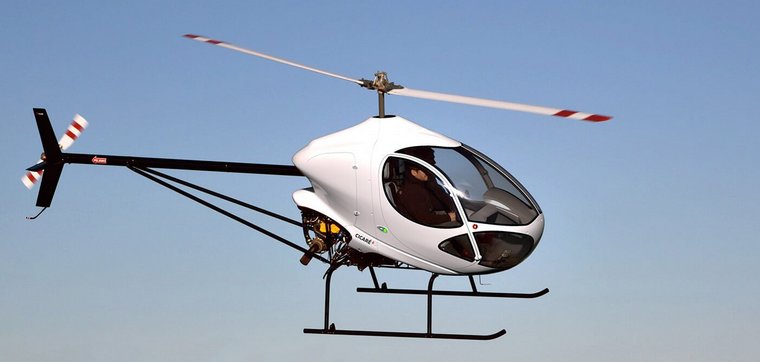 Cicaré USA has announced that the Cicaré 8 helicopter achieved certification under the LTF-ULH regulations for ultralight helicopters (under 600 kilograms or 1,320 pounds max take-off weight), the first helicopter to be certified under this new weight class. The Cicaré 8 also holds a certification in France under its Class 6 requirements and the Cicaré Trainer is also currently approved by the U.S. Federal Aviation Administration (FAA) as an approved air training device (ATD). "Achieving certification from these regional aviation authorities enables the delivery of factory assembled helicopters to our customers in those regions. This is another step in our strategy to achieve broader certifications and make sport helicopters more attainable for anyone." Said Cicaré CEO Keith Barr. "Having the Cicaré 8 be the first ultralight helicopter in the world with a UL Type Certificate in the LTF-ULH category of 600 kg (approx. 1,320 lbs) MTOW is a significant milestone. The extensive certification process required under LTF-ULH is similar to FAA Part 27 certification, though a slightly simpler process," said David Chuguransky, principal engineer for Cicaré, who worked with Deutscher Ultraleichtflugverband e.V. (DULV) to complete the certification.: Said Juan Manuel Cicarè, president of Cicarè S.A. CHAD AIR FORCE REVEALS HURKUS, ANKA AIRCRAFT  Chad has taken into service the three Hurkus trainer aircraft it ordered from Turkish Aerospace Industries (TAI), along with two Anka unmanned aerial vehicles (UAVs). On 10 July President General Mahamat Idriss Déby Itno visited the country's main air base to inspect the new aircraft, with a video of the event revealing all three Hurkus-C turboprops in service along with two Anka UAVs, also made by TAI. The Hurkus-C is the light attack version of the Hurkus trainer, and the Roketsan MAM-L laser-guided weapons also displayed on 10 July can be used by both Chad's Hurkus and Anka aircraft. Chad also appears to have received Cirit laser-guided missiles.  The Hurkus is a tandem two-seat, low-wing, single-engine turboprop aircraft that was designed as a new-generation trainer as well as a platform for performing light-attack and armed reconnaissance combat missions. The Hurkus-A is the basic version that can be used by non-military customers while the Hurkus-B is a more advanced version with more sophisticated avionics. The Hurkus-C is the armed variant that can be used for close air support. It is fitted with a forward-looking infrared (FLIR) sensor and can carry 1 500 kg of weaponry. It has been seen fitted with L-UMTAS anti-tank guided missiles, Cirit laser-guided rockets and external fuel tanks. It will also be able to carry bombs, 12.7 mm machineguns and 20 mm cannon pods. The Anka-A first flew in 2010 and entered service with the Turkish military in 2014. The improved Anka-S entered service in 2017. It has a payload of 200 kg and can carry eight Cirit 70 mm rockets or four MAM-L guided missiles. The Anka-S can be fitted with a variety of payloads including Aselsan SARPER radar, Star Safire 380-HDL forward-looking infrared and satellite communications link. Endurance is 24 hours, with a maximum altitude of 9 000 metres. The aircraft is powered by a diesel engine driving a three-blade propeller, giving a cruising speed of around 200 km/h.  The Boeing Company [NYSE: BA] announced today major program deliveries across its commercial and defence operations for the second quarter of 2023. The company will provide detailed second quarter financial results on 26 July. Major defence program deliveries during the second quarter were as follows: 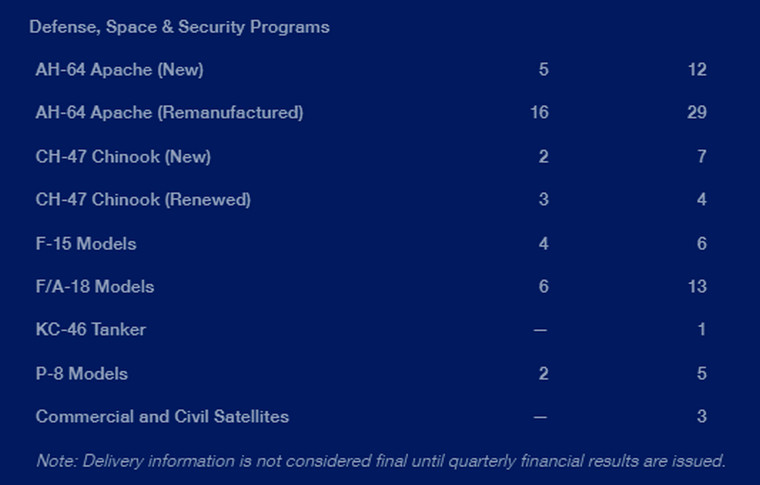 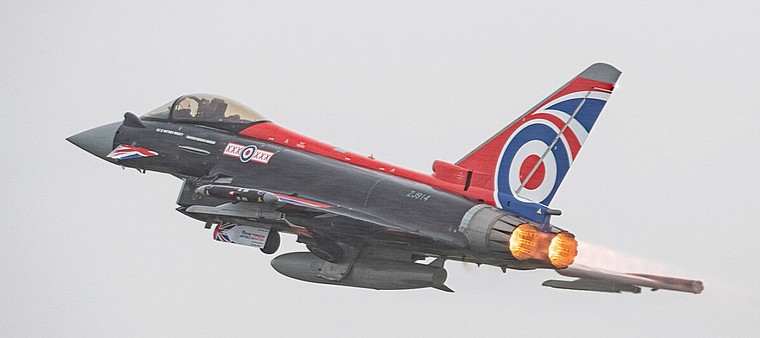 "It's been an incredible year for the Typhoon force." RAF Group Captain Matt D'Aubyn, Typhoon Programme Director, told a media briefing at RIAT. "It has been an unprecedented year in terms of the number of hours that we have flown on operations. "We have continued to support Quick Reaction Alert North, South and Falkland Islands, as well as with continuing operations in the Middle East on Op Shader. Our NATO air policing effort and an enhanced posture in Eastern Europe has really come to the fore. In addition to all that, we have continued to project globally on exercises to maintain those really high-end skill sets, exercises like Red Flag and Arctic Challenge exercise in Sweden." The Typhoon force flew more than 22,000 hours last year - the second highest since it was formed - and within that total it clocked up its highest ever operational hours. 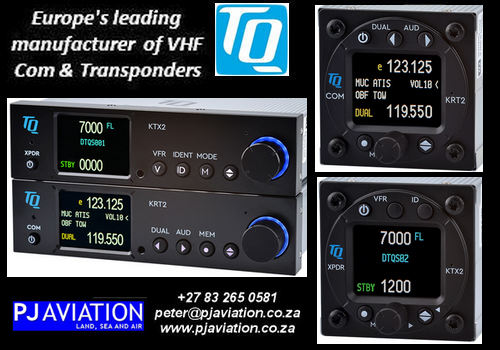 "We are absolutely war fighter focused. Everything we do in the capability programme is focused on delivering the best possible capability to the war fighter to go and do those tasks. "The war in Ukraine has shown that control of the air remains a vital enabling function for any military operation. But also, that control of the air can still be contested by a relatively small but intelligent force in the face of potentially superior massing technology. "That is why we need a Typhoon programme that outpaces the threats and sustains our operational advantage to continue to deliver control of the air." Group Captain Matt D'Aubyn. He said that the work on the European Common Radar System (ECRS) Mk2 radar would sustain Typhoon's operational advantage into the next decade. Earlier this month the UK Ministry of Defence (MOD) announced an £870 million contract award to BAE Systems to deliver the new radar to enhance the Typhoon fighter fleet. The award will fund the further development of technology and integration work on the European Common Radar System (ECRS) Mk2 radar by BAE Systems and Leonardo UK. Looking to the future, Group Captain D'Aubyn added that the Striker II helmet was another 'absolutely vital capability for Typhoon' that will be 'an integral part of the weapon system.' He said that Phase One up to the Preliminary Design Review is progressing well and is on track for the end of the year.  Türkiye has successfully carried out the initial test firing of its Kemankes mini-intelligent cruise missile, leading Turkish defence industry firm Baykar said on Thursday. An indigenously produced Bayraktar TB2 drone successfully fired a Kemankes missile from a distance of 20 kilometres (12 miles) in northwestern Edirne province. The missile reached the determined target area and performed its mission.  Baykar's nationally developed drones Bayraktar Akinci, Bayraktar TB2 and Bayraktar TB3 are fit to be equipped with Kemankes. The missile operates autonomously with an artificial intelligence-supported autopilot system and has a flight duration of one hour. Kemankes is able to operate during the day and night and is resistant to any attempts of electronic jamming due to its anti-jamming capabilities. The missile conducts all line-of-sight communications over the main unmanned platform it is attached to. Accordingly, it can transmit telemetry data and video to the ground control station through the attached main platform. 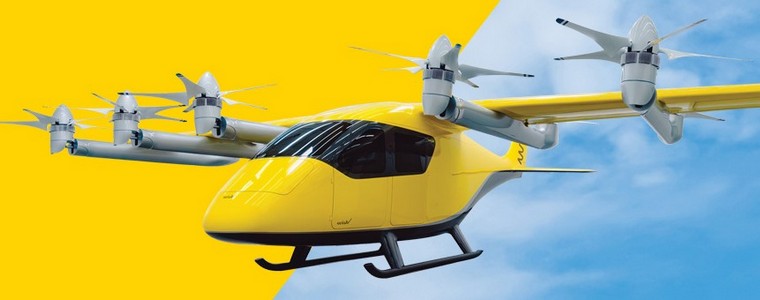 Wisk Aero, a leading Advanced Air Mobility company, will make its EAA AirVenture Oshkosh 2023 air show debut this July. The company will have a number of opportunities for show attendees to learn more about autonomous passenger flight and the company's vision of safe, everyday flight for everyone. "Many of our employees are pilots and we have long dreamed of sharing the groundbreaking, innovative work that we're doing at Oshkosh," said Brian Yutko, CEO of Wisk. "This year, we're fulfilling that dream. We are excited to introduce the Oshkosh community to our 6th Generation air taxi and to sharing more about how autonomous flight is going to positively change the future of aviation." 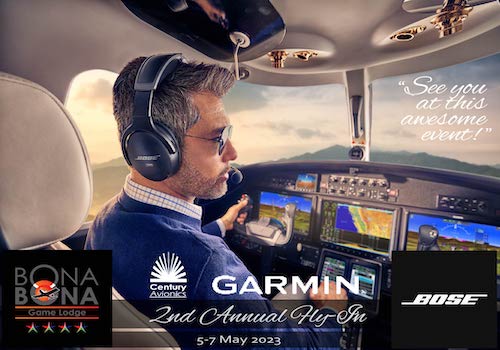 Wisk is an advanced air mobility (AAM) company dedicated to delivering safe, everyday flight for everyone. Wisk's self-flying, eVTOL (electric vertical take-off and landing) air taxi will make it possible for passengers to skip the traffic and get to their destination faster. Wisk is a fully-owned Boeing subsidiary that operates separately from Boeing and is headquartered in the San Francisco Bay Area, with locations around the world. With over a decade of experience and over 1600 test flights, Wisk is shaping the future of daily commutes and urban travel, safely and sustainably. Wisk is on a journey to deliver safe, autonomous, all-electric, everyday flight, join us and learn more here. 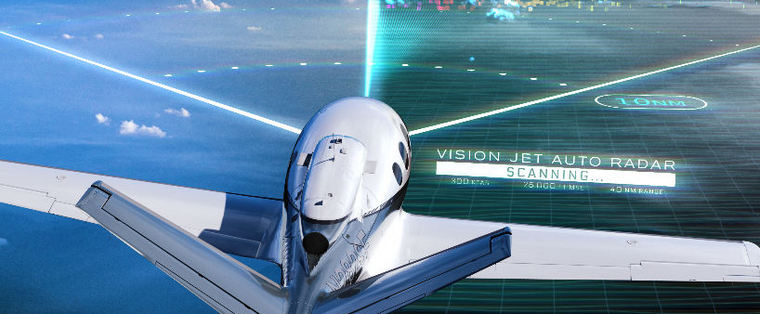 Cirrus Aircraft today announced that Auto Radar powered by Garmin® and Cirrus IQ™ have been added as new advanced features on the world's best-selling personal jet, the Vision Jet. These upgrades now provide pilots with increased situational awareness and connectivity during all stages of pre-flight and inflight activities. "Cirrus Aircraft incorporates intelligent and award-winning innovations into its ecosystem to make flying simpler, safer and more approachable for the pilot and passengers," said Zean Nielsen, Chief Executive Officer of Cirrus Aircraft. "The award-winning Vision Jet is a testament to our team's ongoing dedication to advancing the personal aviation industry. Over the years, the Cirrus Airframe Parachute System® (CAPS®) and Safe Return™ Autoland have revolutionized the Personal Aviation industry. Now with Auto Radar and Cirrus IQ connectivity, pilots have more situational awareness inflight and can streamline the preflight process." Auto Radar allows the pilot to select the desired radar range which then automatically scans the area ahead and displays a composite, real-time depiction of the weather. By automatically selecting an optimal horizontal scan pattern and vertical tilt combination, the Auto Radar system works to create an in-depth view of the weather ahead. It volumetrically profiles areas of precipitation to provide the pilot with a real-time composite view of radar returns. The imagery is clear with a 16-color palette and improved automatic ground-clutter suppression.  Cirrus IQ makes aircraft ownership increasingly streamlined with features like Maintenance Minder and Technical Publications for owners to keep track of their aircraft maintenance intervals and stay up to date with any applicable technical publications for their aircraft. The My Trips and Achievements features automatically log each flight completed along with flight achievements. The Find Us feature allows owners to quickly locate Cirrus Aircraft Campuses, Cirrus Authorized Service Centres and Training Partners nearby directly within the app. The LTE-enabled hardware that powers Cirrus IQ is standard on newly manufactured G2+ Vision Jets and Auto Radar is available as part of the Enhanced Awareness Package. The Cirrus IQ mobile app is available to owners with an active JetStream contract. Auto Radar and Cirrus IQ retrofits will be available for G2 and G2+ Vision Jet owners in the future through Cirrus Upgrades and Accessories.  Sudan, Port Sudan Airport: A civilian Antonov aircraft crashed on take-off from Port Sudan Airport (PZU). Nine occupants died in the accident; one child was injured.  France, Nevers-Fourchambault Airport, Bourgogne: A UAE Air Force Aermacchi MB-339NAT 442, operated by the Fursan Al Emarat display team as "7", suffered an engine failure during the flight on the way back from RAF Fairford (FFD/EGVA). An emergency landing was made at Nevers-Fourchambault Airport (NVS/LFQG), Bourgogne-Franche-Comté. The pilot was not injured and the aircraft received minor damage. Sweden, near Värnanäs, S of Kalmar, Sweden: The pilot rof a Piper PA-24-250 Comanche reported that the airplane experienced a problem with fuel pressure during flight. A diversion to Kalmar Airport (KLR/ESMQ) was carried out, but the a/c could not reach the airport and carried out a forced landing on a road (former E22 highway) near Värnanäs, south of Kalmar Airport. There was no traffic on the road and the forced landing was successful. Both occupants were not injured.  26 JULY 1918 Edward Mannock an Irish flying ace in the Royal Flying Corps and Royal Air Force during the First World War was born on 24 May 1887.  On 26 July, Major Mannock offered to help a new arrival, Lt. Donald C. Inglis from New Zealand, obtain his first victory. After shooting down an enemy LVG two-seater behind the German front-line, Mannock is believed to have dived to the crash site to view the wreckage, seemingly breaking one of the unwritten rules of fellow pilots. In consequence, while crossing the trenches the fighters were met with a massive volley of ground-fire. The engine of Mannock's aircraft was hit and immediately caught fire, and shortly thereafter the plane crashed behind German lines. Mannock's body is believed to have been found, though this is unproven, about 250 yards (250m) from the wreck of his machine, perhaps thrown, perhaps jumped. The body showed no gunshot wounds, and Mannock had vowed to shoot himself if shot down in flames.  Heinie's RC Warbirds at Barnstormers  Google Banner Ad |
                         |
 |
 |

Copyright © Pilot's Post PTY Ltd
The information, views and opinions by the authors contributing to Pilot's Post are not necessarily those of the editor or other writers at Pilot's Post.